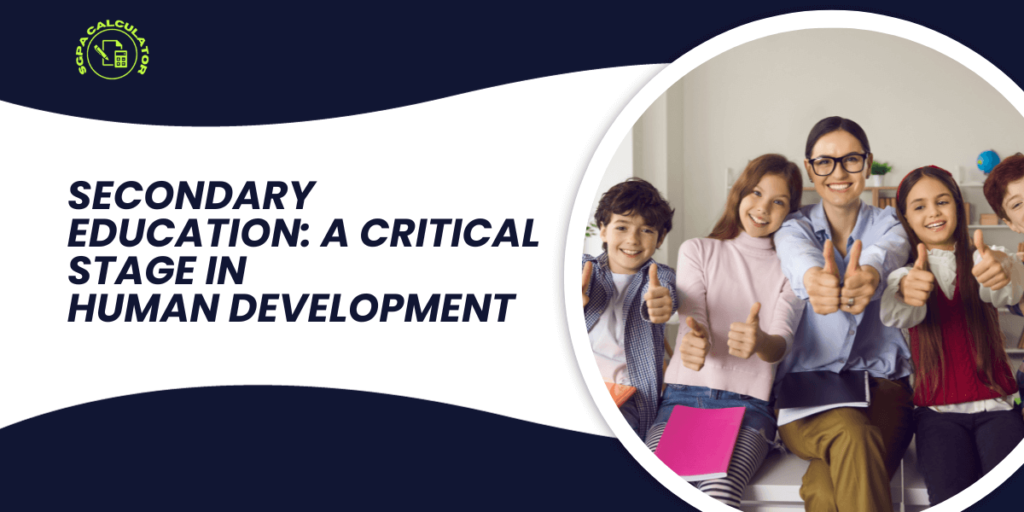Secondary education is the stage of education that follows primary education and precedes higher education. It is typically provided to students aged 12 to 18, although the specific age range may vary depending on the country. Secondary education is an important stage in human development, as it provides students with the knowledge and skills they need to succeed in higher education and the workforce.
The Goals of Secondary Education
The goals of secondary education vary somewhat from country to country, but they generally include the following:
- To develop students’ academic knowledge and skills in a range of subjects, including math, science, English, history, and social studies.
- To prepare students for higher education and the workforce.
- To help students develop their critical thinking skills and problem-solving abilities.
- To promote students’ personal and social development.
- To prepare students for responsible citizenship.
Read Our Blog: What is the Role of Education in Human Capital Formation
The Curriculum of Secondary Education
The curriculum of secondary education is typically divided into two categories: core subjects and elective subjects. Core subjects are required for all students, while elective subjects allow students to explore their interests and prepare for specific careers.
Common core subjects in secondary education include:
- English
- Mathematics
- Science
- History
- Social studies
Elective subjects in secondary education can vary widely, but they may include:
- Foreign language
- Art
- Music
- Drama
- Physical education
- Vocational education
The Importance of Secondary Education
Secondary education is important for a number of reasons. First, it provides students with the knowledge and skills they need to succeed in higher education and the workforce. In today’s economy, most jobs require at least a high school diploma, and many jobs require a college degree. Secondary education helps students develop the academic foundation they need to succeed in these higher levels of education.
Second, secondary education helps students develop their critical thinking skills and problem-solving abilities. These skills are essential for success in all aspects of life, from work to personal relationships. Secondary education helps students learn how to think critically about information, analyze problems, and develop creative solutions.
Third, secondary education promotes students’ personal and social development. During adolescence, students are going through a period of rapid physical and emotional change. Secondary education provides students with a supportive environment where they can explore their identity, develop their social skills, and learn how to make responsible decisions.
Finally, secondary education prepares students for responsible citizenship. In a democracy, citizens are expected to be informed and engaged in the political process. Secondary education helps students develop the knowledge and skills they need to be effective citizens.
Challenges in Secondary Education
Secondary education faces a number of challenges, including:
- Inequity: Access to high-quality secondary education is not equal for all students. Students from low-income families and students of color are more likely to attend schools with fewer resources and lower-quality instruction.
- Dropout rates: A significant number of students drop out of secondary school before graduating. This is particularly true for students from disadvantaged backgrounds.
- College and career readiness: Many students graduate from secondary school without the skills and knowledge they need to succeed in college and the workforce.
Read Our Blog: Miles Education
Addressing the Challenges of Secondary Education
There are a number of ways to address the challenges in secondary education. One important step is to increase funding for schools in low-income communities. This would help to ensure that all students have access to high-quality instruction and resources.
Another important step is to implement dropout prevention programs. These programs can help students identify and address the challenges they are facing that may be leading them to consider dropping out of school.
Finally, schools need to focus on preparing students for college and the workforce. This can be done by offering a rigorous academic program, providing students with opportunities to participate in career-related activities, and helping students develop the soft skills they need to succeed, such as communication, teamwork, and problem-solving.
Conclusion
Secondary education is a critical stage in human development. It provides students with the knowledge and skills they need to succeed in higher education and the workforce, develop their critical thinking skills and problem-solving abilities, and become responsible citizens. There are a number of challenges facing secondary education, but there are also a number of things that can be done to address these challenges.





